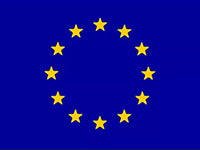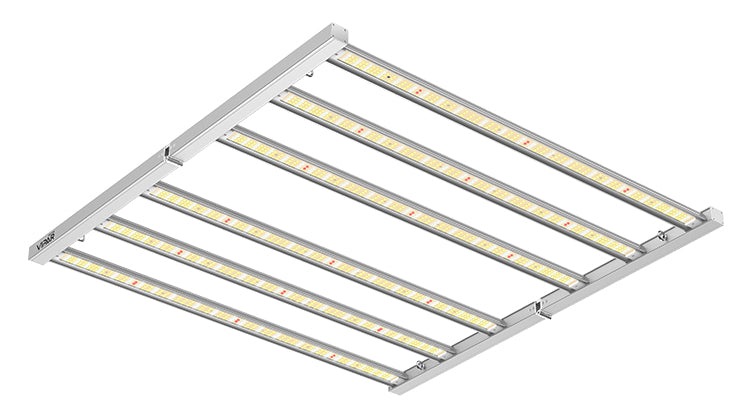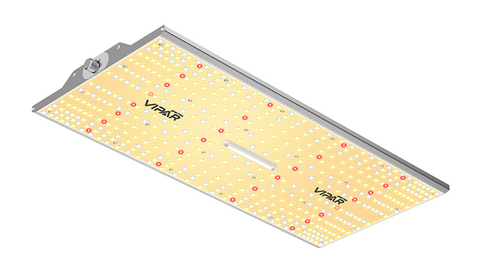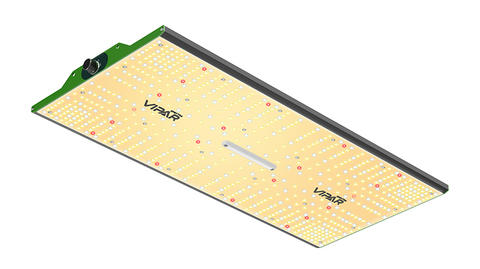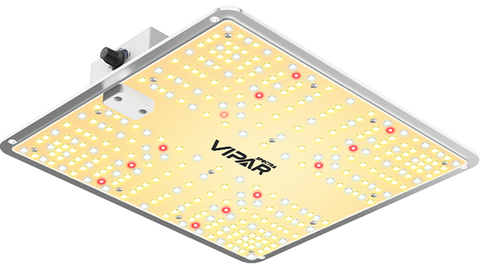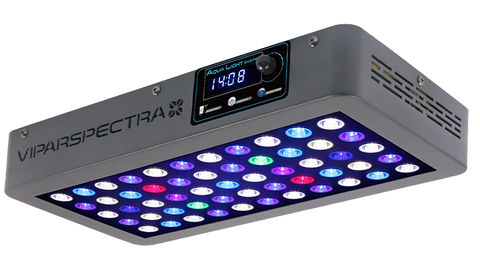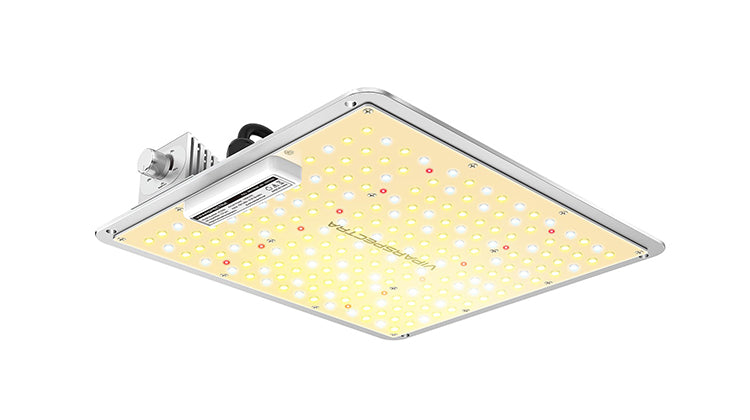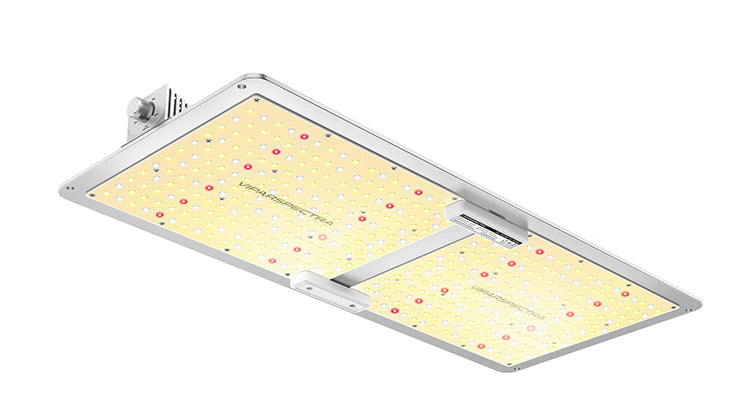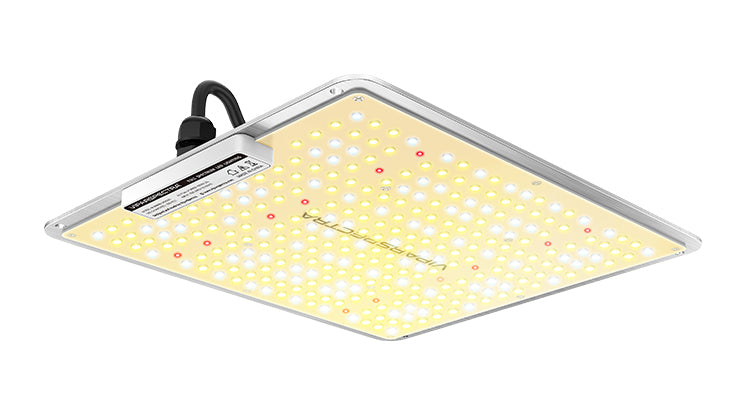Choosing the best grow light for a beginner grower can be a daunting task. A simple Amazon search for “grow lights” will yield hundreds of different grow lights for all types of cultivators. Everything from $5 incandescent lamps to expensive high-tech commercial LED or HID lamps can be found. But which light will best fit your setup? Below is an explanation of how different plant types react to different grow lights as well as a list of some different types of grow lights, their pros and cons, and how you can use them for your indoor growing.
Which light is best for my garden?
When searching for the proper lighting for your indoor garden, a common question that may come up is “Which light is best for my plants?” This question has many different factors to consider before a concrete decision can be made. Firstly, which type of plants do you have in your garden? If you have plants that are leafy greens, seedlings, or have lots of foliage, it would be best to have lights with cooler spectrum bulbs (6,500 K). If you have flowering or fruiting plants such as citrus, warmer spectrum bulbs (2,500 K) will be best suited.
The next question that you may find yourself asking is “What does K stand for?” K is short for Kelvin, a scale of temperature measurement. Similar to Fahrenheit and Celsius, the lower the number, the cooler the temperature. However, the light spectrum acts oppositely; (the lower the number the warmer the light).
The last piece of information that can be useful to know is what color corresponds to what side of the light spectrum? Warmer light tends to be yellows or reds while colder lights tend to be blues and whites.
What is the light spectrum and how does it relate to my garden?
The electromagnetic spectrum is a wide range of frequencies of electromagnetic radiation. In Layman’s terms, there are invisible waves all around us with different sizes and speeds. These waves are so small that they are measured in nanometers (nm). A nanometer is one-billionth the size of a meter. Some more well-known parts of this spectrum include X-rays, microwaves, and radio waves.
One part of the spectrum that you may not realize is part of it is the visible light spectrum. This portion of the electromagnetic spectrum is the only part visible to the unaided human eye. These waves range from about 400 nm to 700 nm. The classic acronym “ROYGBIV” that was used to remember the colors of the rainbow can also be used to remember the order of the visible light spectrum. Red is at the upper end of the spectrum (700 nm), violet is at the lower end of the spectrum (400 nm) with yellow/green light in the middle (~550nm). You can use this information to better understand which light produces these wave frequencies to provide the correct color of light to your plant.
Why should I use indoor plants grow lights?
Indoor plants grow lights offer several benefits and cultivators have virtually endless options to choose from, according to Michael Zartarian, an engineer at Zartarian Engineering and the RII Technical Advisory Council. "We are living in the golden age of grow lights. There have never been so many high-quality options available to home and commercial growers," he said.
Some of the reasons he touts indoor grow lights are:
- Cost-effectiveness
- Efficiency
- Productivity
- Safety
- Standardized technology
- Third-party testing and verification
- Can any LED light be used as a grow light?
Technically, yes, any LED light can be used as a grow light. However, there are some that work better depending on the stage of growth that the indoor plant has entered. Zartarian noted that any standard 150 watts LED white light bulb could adequately nurture a small plant in the early stages of life.
As the plant matures, its need for light will change. "As the plant gets bigger and matures into the flowering stage of its life, it requires much more light over a wider area to grow optimally. This is where high-power, purpose-built grow lights are needed to get the job done properly," explained Zartarian. In terms of what to look for, Schimelpfenig pointed out that growers can “trust third-party certifying organizations to test and validate the claims made by manufacturers."
Do I need a special light to grow plants indoors?
Some plants, such as microgreens, may flourish under basic desk lamps, according to Zartarian. But indoor plants need brighter and more consistent light to carry them into maturity. At the same time, plants need a so-called "dark period" during the flowering stage, but ample light is key throughout most of the indoor plant life cycle.
So, not just any light will do the job. Yes, flowering indoor plants need specialized lighting solutions to support photosynthesis, and horticultural lighting products are designed to optimize plant development, unlike your office desk lamp.
Are house lights good for plants?
Even if you no longer use incandescent or halogen bulbs and have opted for LED lighting, it is unlikely that the lights in your home will be sufficient for your plants. Schimelpfenig cited the simple reason that the lamps in your house are designed for human eyes, not for plants.
"Since the needs of humans to see are different than the needs of plants to grow, lighting solutions in your house are not designed to provide the spectra plants need for photosynthesis, and many cultivars will not get the light they need to develop to their maximum potential," she elaborated.
Setting Up an Indoor Plant Growing Area
How do you get sufficient light for houseplants and indoor garden areas? Here are 3 tips on how to best set up your space.
Consider your indoor garden plot. Whether it’s a single shelf, a basement area, or an entire room, look at how much space you have. Pot plants and beddings accordingly.
Depending on the type of plant, group the pots or trays 4 to 8 inches apart to allow for growth and easy access for pruning and care.
You’ll also want to make sure you purchase lights that will illuminate your entire plantings area. You may need more than one bulb or light source to fully cover your growing area. Depending on the size, you may only need to use only one light for houseplants, or you may need more.
Types of Grow Lights
There's a large amount of information about growing with lights, the best technology to use, and testing done. These are the basics that will point the average indoor grower in the right direction.
Fluorescent
Fluorescent lighting is still the most popular used for supplementing light during the winter months, encouraging flowering and starting plants off with seeds well. Most are more cost-efficient than other high-intensity lighting or incandescent bulbs and many setups can be bought with the frame, fixtures, a small lamp, or just a bulb. Fluorescent light produces less heat that can be harmful to plants than incandescent and high-intensity discharge (HID) lights, although cooling can be provided with HID's.
Bulb types include CFL (small compact fluorescent bulbs), T5, and T8 (different diameter sizes and T means tubular). T5 fluorescent tubes are the most popular used and purposely made for use as grow lights, although some people grow plants well with the T8s that are cheaper. For the average indoor grower and beginner T5s are the best routes to take.
Light-emitting diode lights over the past few years have become more popular. The claim for using LEDs over other types is they cost less in terms of consuming a smaller amount of electricity compared with fluorescent and HID lighting. They also do not produce too much heat which can damage seedlings or affect plant growth.
LED's are cheaper in terms of electricity usage and bulbs last much longer. Buying an LED unit can be more expensive though, but most buyers state the fact that long term they reduce costs. Low energy usage and high inefficiency.
In comparison tests, I have reviewed this article is interesting and states fluorescent lighting produces better results growing seedlings and herbs. This report also has a reply from the LED supplier stating why the LEDs did not perform as well, an interesting test. The second experiment also shows florescent producing better growth results.
Since that experiment LED's have advanced more and are recommended as the best option by many growers, especially the indoor plant growers. However, I’m not in a position to say buy one or the other – it's pretty much up to your own research and setting up the correct growing conditions. Results have been proven over a long period of time and many times from fluorescent lights, though.
Various types of units are sold and different sizes. Even single bulbs are sold the same as fluorescent CFLs. An issue with LED grow lights compared to fluorescent is the cost per coverage. Long fluorescent tubes will cost less to cover more space.
The appearance of plants is important for most plant growers within a home and LED's don’t look very attractive, whereas many fluorescent units and how the lighting appears to look appealing indoors.



